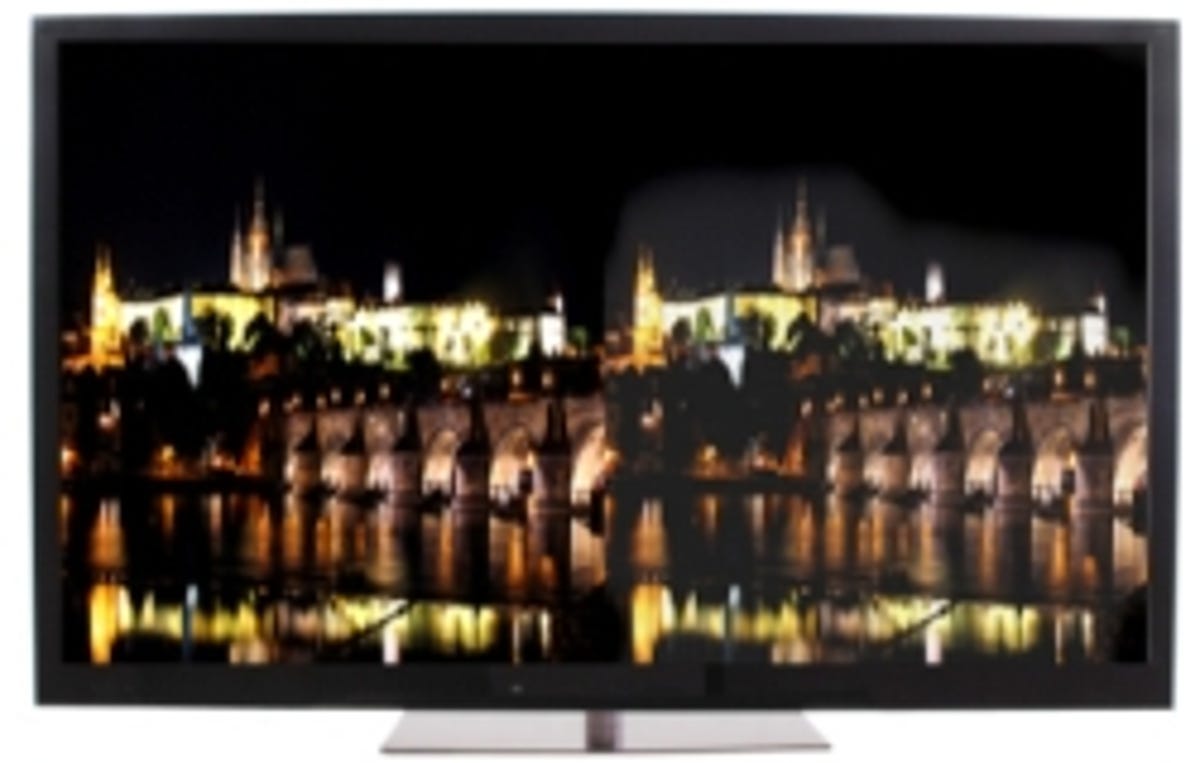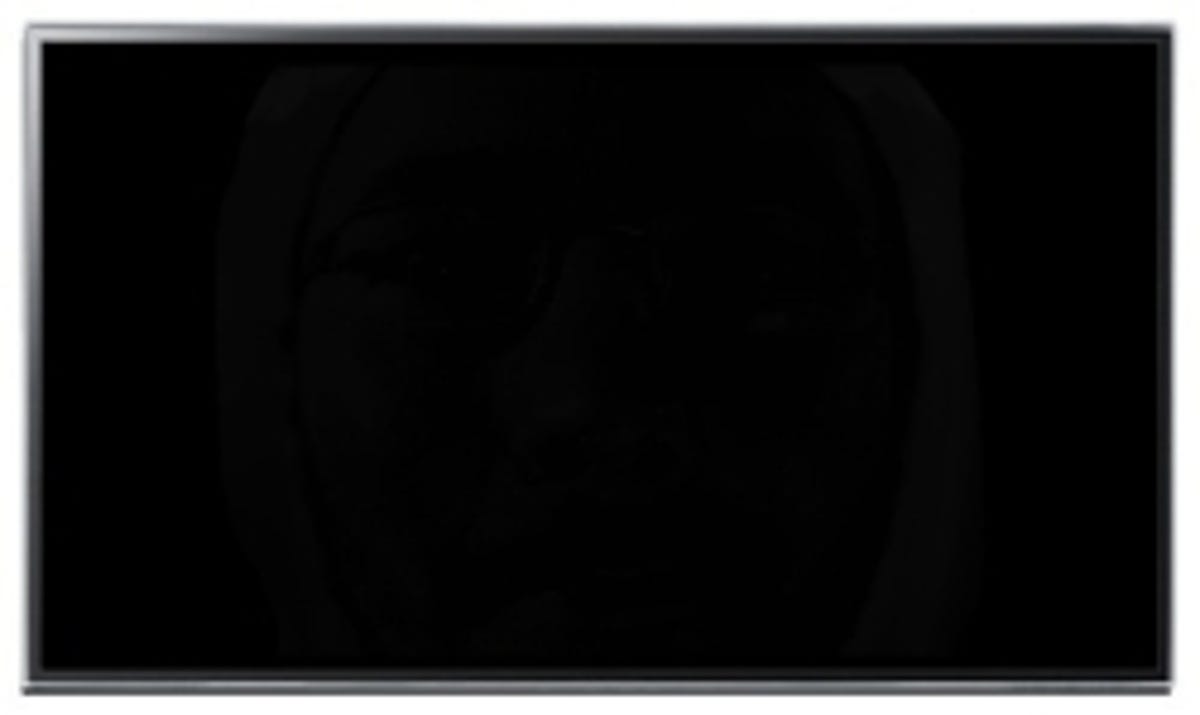The onslaught of marketing this time of year is unsurprising, but no less unpleasant. Advertising of products can be a useful tool, informing the public of the latest and greatest.
Where it becomes offensive is when it includes blatant lies, misleading truths, or perpetrates a myth.
Don’t be fooled by these deceptive practices, in this (admittedly first) edition of Myths, Marketing, and Misdirection, the HDTV edition.


Geoffrey Morrison/CNET
Contrast ratios
This is perhaps the most egregious of all marketing tools. You’ll see claims of 1,000,000:1 or greater touted by nearly every major manufacturer. Every contrast ratio you have ever seen claimed by a manufacturer is a lie. There is no regulated way to measure contrast ratio, so every manufacturer can “invent” its own way to calculate it.
Often, the marketing department says “we need X contrast ratio to sell this TV” and if that isn’t the end of it, maybe the engineers hold their nose and come up some method the where the number works. That method likely has nothing to do with the TV you’re looking at.
For the full story, check out my Contrast ratio (or how every TV manufacturer lies to you) article.


600 Hz
Over the past few years, LCD TV manufacturers have touted 120 Hz, 240 Hz, and higher refresh rates. This is because LCDs inherently have poor motion resolution (as in, they can look soft when objects move on screen). One way to combat this is to increase the refresh rate to a multiple of the normal 60 Hz.
Plasma HDTVs don’t have this issue with motion, and therefore don’t need higher refresh rates. Try explaining that to the casual TV buyer in a store. I’ve gotten e-mails and seen comments about “when will plasmas ‘catch up’ and offer higher refresh rates?”
So the problem is one of marketing and a lack of consumer education. No fear, more marketing to the rescue. Plasmas create an image with “subfields,” so for every frame of video (60 Hz, or 60 frames every second) the screen actually flashes 10 times. That’s where the 600 Hz comes from, 10 subfields for every video frame.
So “600 Hz” isn’t incorrect, but it’s still just marketing.
It’s worth noting that not everyone notices, or is bothered by, motion resolution (good or bad). If you want to learn more about it, check out: What is 600Hz and What is Refresh Rate.


Sharp
Quattron yellow pixel
Sharp has made a big push with its “Quattron” yellow pixel, an old-school “well ours is one better” over the typical red, green, and blue of all other TVs. Their claim is that it produces more realistic colors, including yellow.
Here’s the thing, it’s fake. Not the pixel, that’s real enough, but the yellow is entirely created by the TV. It has to be. The entire television system, from the camera to the TV, is based on the three additive primary colors: red, green, and blue. With these three colors, all the colors in the rainbow can be created. Combine red and green, and you’ve got yellow. That’s how every other TV works.
There are strict guidelines for exactly what that red, green, and blue should look like. If there weren’t, every TV show, every shot in a TV show for that matter, would look radically different. If a TV follows these guidelines, reproducing the red, green, and blue exactly to the standards, the resulting picture is incredibly lifelike and likely more natural than you’d ever thought possible.
Change those colors, add to them, make them “richer” or “better,” and the TV is not reproducing what is in the signal. It is no longer accurate, though many people do like this over-done or oversaturated color scheme.
Which is to say, if a TV is designed and set up properly, it doesn’t need a yellow pixel. It produces yellow perfectly on its own. If Sharp is adding yellow, or making yellow “pop,” it is likely changing what is in the original signal. If it’s producing exactly what the standard specifies, what’s the point of the yellow pixel?
Also, red, green, and blue are the wavelengths to which your eyes are most sensitive. Funny how that works.
LED TV
I did a big article on this recently. There is no such thing as an LED TV. The misleading marketing on this one really annoys me. All “LED TVs” are just LCD TVs that use LEDs as their light source. Just because a TV uses LEDs doesn’t mean it looks or performs better than a regular LCD or plasma.
They might, but the technology itself doesn’t instill absolute benefits.
Check out LED LCD vs plasma vs LCD, Why LED does not mean a better picture, and LED LCD backlights explained for more info on this.
Recharge
Plasma HDTVs do not, and have never, needed to be recharged. This is a myth that just won’t go away.


Geoffrey Morrison/CNET
Burn-in/image retention
Here’s another contentious issue that was the subject of a recent article. “Burn-in” is a permanent ghost-like scar caused by leaving a static image on screen for too long. Here’s the part most people don’t know: All TVs can get burn-in. You really have to work at it, though, leaving a stock ticker or DVR menu on screen for days.
What is possible on plasma TVs is image retention. This is similar in appearance to burn-in, but isn’t permanent. Instead, it can be removed just by watching something else for a bit.
More info and lots of comments in my Is plasma HDTV burn-in a problem? article.
Energy efficiency
It is true that LED LCDs are generally more efficient than “regular” LCDs and plasmas. If you want to be as green as possible, then absolutely get an LED LCD, turn down its backlight control, and you’ll be very eco-friendly.
If you’re just trying to save money, though, this won’t do it. You’ll never recoup the cost of buying an expensive LED in the first place. More info in the LED article I mentioned earlier.
Related stories
- LED LCD vs plasma vs LCD
- Why all HDMI cables are the same
- Why all HDMI cables are the same, Part 2
- Is plasma HDTV burn-in a problem?
- Is LCD and LED LCD HDTV uniformity a problem?
- Geoff Morrison’s HDTV and home theater resource center and infotacular
Viewing angles
LCD manufactures like to claim their TVs are viewable from all angles. This is blatantly false. The better LCDs can be viewed off to the side somewhat, but all lose contrast ratio and color accuracy away from dead-on center. Cheap LCDs often have terrible off-axis (as in, away from dead center) viewing, some going so far as inverting the image (like viewing a photo negative) if you’re below or too far to the side.
If you have a small room, or aren’t off to the side, this isn’t a big issue. When you’re at the store checking out a potential TV, though, make sure you look at it from every angle you might potentially view it at home.
If you really want an LCD, but require a wide viewing angle, look for LCDs that use IPS (In-Plane Switching) technology, as these have better off-axis picture quality. Panasonic, LG, and Vizio all have certain models that use IPS. Their black levels still get worse off-axis, and generally IPS-based models don’t have very good black levels to begin with (even on-axis).
HDMI cables
The picture quality of a $2 HDMI cable will be identical to that of a $200 HDMI cable. It is not possible for there to be a difference. Save your money. Check out my Why all HDMI cables are the same and Why all HDMI cables are the same, Part 2 and Still more reasons why all HDMI cable are the same articles for more info.
Upconverted is the same as HD
Don’t believe the hype: HD looks WAY better than standard definition. All TVs and many DVD players claim to “upconvert” standard definition content to look “nearly as good as HD.” They have a radically different definition of “near” than I do.
Blu-ray players are cheap, and worth getting. Don’t skimp on your cable/satellite bill by not getting the HD channels. If you’re spending all that money on a new TV, not putting HD on it would be like buying a Ferrari and replacing the V12 with a lawnmower engine.
Check out What is upconverting? and When HD isn’t HD and for that matter 1080i and 1080p are the same resolution
Mounting a TV above a fireplace
This one persists as it seems like such a good idea, and a logical place to put a TV.
You should never mount a TV above a fireplace. It will cause you neck strain and shorten the lifespan of the TV.
Staring upwards at a TV for hours every day is like sitting in the front row of a movie theater every time you watch TV. This is not comfortable. If you ever use the fireplace, the heat and soot will reduce the life of the TV considerably.
Check out How high should I put my TV? for more info.
Any others?
Got any myths and marketing mumbo you hate? Got any you’re curious about? Ask in the comments below, or send me an e-mail by clicking my name below and going to the link on the following page. You can also ask me on Twitter.




